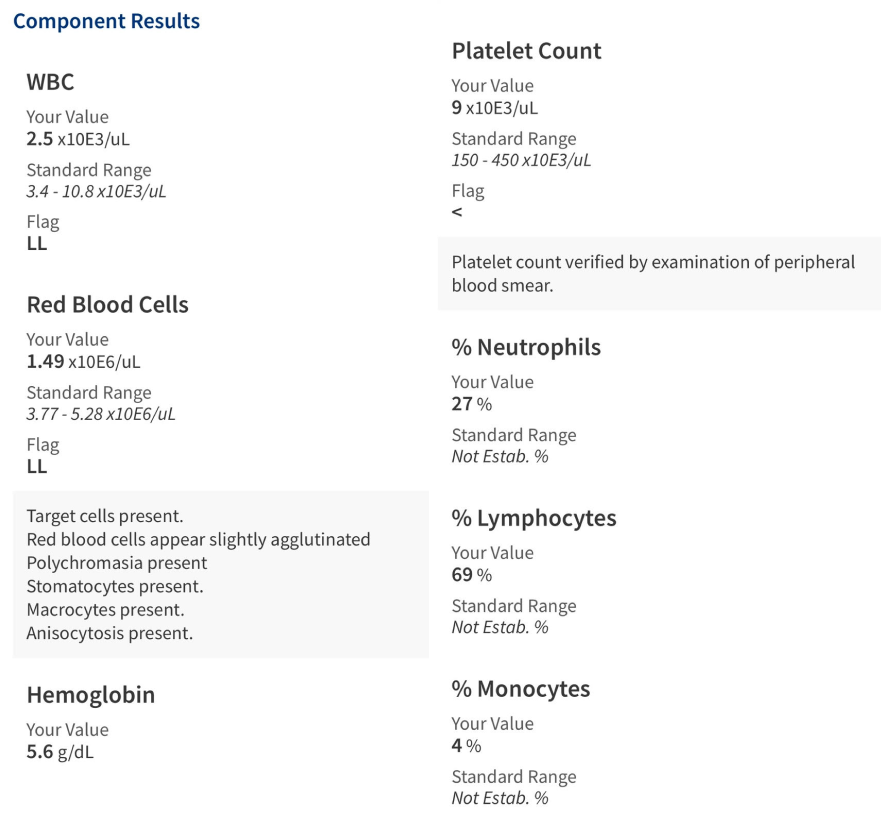From Athlete to Feeling Winded Folding Laundry: My Journey to Diagnosis with Paroxysmal Nocturnal Hemoglobinuria & Aplastic Anemia
I never envisioned my future including a chronic illness, chemotherapy in my 20s, or any health complications at all. I grew up healthy, physically active and played many sports. I enjoyed eating healthy foods and considered myself to be very in tune with my body. As someone who was so active and always had a busy schedule, I knew something was majorly wrong when I began experiencing fatigue and strange symptoms out of nowhere. I found myself having shortness of breath from simple household tasks. I started having heart palpitations as well as noticing little dot bruises on my ankles and legs. I did some research and discovered I had petechiae, and those bruises began to spread. The research also led me to find out that those bruises are commonly one of two things - vitamin deficiency or cancer. This was a huge red flag for me, as I was confused about why someone who worked out daily would be winded while folding laundry. I decided to schedule an appointment to test my blood levels and see what was going on.
My initial blood tests were on the lower side, but my doctor didn’t want to do a follow-up, so I went another 8 months and things just kept getting worse. I finally got more bloodwork done, and that’s when everything changed.
These results from that appointment were shocking. The doctors and medical staff were shocked by the numbers and couldn't believe I had still gone to the gym earlier that morning. I’m an esthetician, so I was in the middle of working on a client’s lashes when I got a call from my doctor. I think we all know how rare it is to get an actual phone call from your doctor, so I asked my client if I could take the call.
My provider instructed me to go to the ER immediately for blood transfusions and additional tests. At first, the doctors thought I had leukemia. I was in complete shock. After a weekend stay and hundreds of tests, they realized it was not actually leukemia, but something different—and more rare—requiring a bone marrow biopsy for a correct diagnosis. This was when I was officially diagnosed with aplastic anemia (AA) and paroxysmal nocturnal hemoglobinuria (PNH).
My life radically changed overnight. I became blood transfusion dependent, needing both platelet and red blood cells weekly just to stay alive. With AA, the bone marrow becomes damaged and stops producing blood cells, while PNH destroys the few cells the body does create. The combination of these two conditions made my diagnosis incredibly critical. Given the severity of my health and not wanting to be bound to infusions or medications for the rest of my life, I decided to proceed with a bone marrow transplant (BMT) to treat my conditions. (You can read more about how I came to that decision here.) The weekend after Christmas in 2022, I packed my bags and traveled across my state to receive treatment in Seattle.
A BMT is an extreme and difficult procedure. It requires a lot of mental and physical strength, as well as a strong support system. I was very blessed to have my husband by my side during such a challenging time. I was scared to undergo chemotherapy and radiation as part of the BMT regimen. Being young and having long blonde hair, I was also very upset about the idea of losing all my hair. I had always followed a silly motto growing up, whether it was for sports, jobs, or big events: "Look good, feel good." I didn’t want to start treatment with my long hair only to have it fall out dramatically. Instead, I wanted to feel confident, so I decided to embrace the change with a makeover: a blonde buzz cut and a little extra makeup than usual.
It may sound funny, but I have no regrets. In fact, I would recommend anyone who might lose their hair due to treatment to do something similar. Try that crazy hair color you’ve always wanted or a fun haircut you’ve been scared to try. Make it fun—it will take a lot of the emotional weight off your shoulders when you eventually lose your hair.
A photo taken in the ER when the doctors told me I had Leukemia
February 13, 2023, was the day I received my new cells and began the recovery process. Recovery from a BMT is also challenging, with many side effects, post-treatment hurdles, and emotional trauma. It took me about 10 months after transplant to start feeling more like myself again. My levels began to rise on their own, and I was no longer transfusion-dependent. Once I hit my 12-month mark, I was able to stop all immunosuppressant medications and was officially medication-free!
It’s wild to feel like your life got completely turned upside down overnight. I went from being “normal” to having two conditions that in combination made me one in a million., But I learned from sharing on social media that I’m not alone. There are many of you who have had strange diagnosis stories and have also needed a transplant for treatment. Nothing helped me more than finding and talking to other people going through something similar to me. Finding support while going through something like this is so vital. I love connecting with all of you, so feel free to message me on Instagram—I’d love to hear your story as well. You can also find more about my story and further details on my page.



